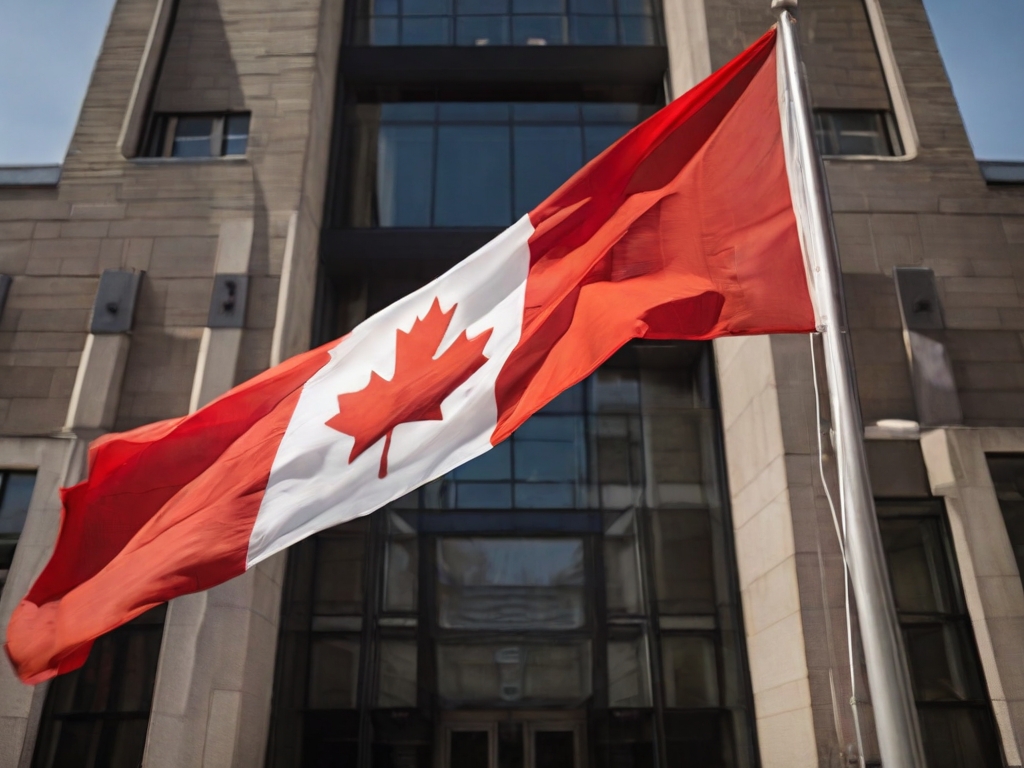In 2023, Canada witnessed a historic milestone in its demographic landscape. The country’s population surged past 40 million, marking the most rapid expansion since 1957. This unprecedented growth, fueled primarily by immigration, has catapulted Canada into the spotlight, showcasing its role as a burgeoning destination for new residents worldwide.
Statistics Canada reports a staggering increase of over 430,000 people in just the third quarter, a clear indication of the country’s growing appeal. The entire year of 2022 saw Canada’s population jump by over a million, setting a new record in its post-war history. The government has played a pivotal role in this growth, setting ambitious immigration targets to foster economic development and cultural diversity.

Provinces like Ontario, British Columbia, Alberta, Quebec, and Manitoba have been the primary beneficiaries of this influx, with Ontario alone welcoming over 115,000 new permanent residents in the first half of 2023. This influx is reshaping the demographic fabric of Canada, bringing new opportunities, challenges, and a dynamic shift in the national identity.
As Canada continues on this trajectory of growth, it stands at the cusp of a new era, one that promises to redefine its global standing and internal dynamics.
Introduction to Canada’s Population Boom
In recent years, Canada has experienced a population boom that is nothing short of historic. In the third quarter of 2023 alone, the country’s population grew by more than 430,000 people, the fastest pace of growth in any quarter since 1957. By October 2023, Canada’s population had exceeded 40.5 million. This remarkable growth continued the trend from 2022 when Canada added more than one million new residents, the most significant one-year spike in over six decades.
Record-Breaking Numbers
The numbers speak volumes about the scale of this demographic shift. With a growth rate of about three percent between July 2022 and July 2023, Canada outpaced all other G7 nations, even amid the global pandemic. The increase is largely attributed to immigration, as Canada has become an increasingly popular destination for newcomers.
The Role of Immigration
In 2022, the surge in Canada’s population was primarily driven by an influx of permanent and temporary immigrants. This was a part of a broader strategy by the Canadian government to stimulate growth and offset the challenges of an aging population. The government set ambitious immigration targets to welcome 465,000 permanent residents in 2023, 485,000 in 2024, and 500,000 by 2025. These targets are part of a broader plan to attract newcomers to various regions across the country, including smaller towns and rural communities.
Impact Across Provinces
The impact of this population growth is evident across Canadian provinces. Ontario, as the most populous province, emerged as the top destination for immigrants in the first half of 2023, welcoming 115,700 new permanent residents. Other provinces like British Columbia, Alberta, Quebec, and Manitoba also saw significant increases in their population due to immigration.

This remarkable population growth in Canada presents a transformative moment for the country. It offers an opportunity to bolster the economy, enrich cultural diversity, and reshape the social fabric. As Canada navigates this period of rapid change, it faces the challenge of integrating a large number of newcomers while maintaining its global reputation as a welcoming and inclusive nation.
Government Initiatives and Immigration Targets
Canada’s record population growth in 2023 is not just a statistical marvel but a testament to the government’s strategic initiatives and policies. Recognizing the potential of immigration in driving economic growth and addressing demographic challenges, the Canadian government has implemented a series of ambitious plans.
Setting High Immigration Targets
The government has set progressive immigration targets to support this growth. In 2023, the aim was to welcome 465,000 permanent residents. This target is set to increase to 485,000 in 2024 and further to 500,000 by 2025. These targets are part of a broader vision to attract skilled workers, reunite families, and offer refuge to those in need.
Regional Focus
A significant aspect of these initiatives is the focus on regional dispersion. The plan encourages the settlement of immigrants in smaller towns and rural communities, fostering regional development and addressing specific labor shortages. This approach aims not only to alleviate the pressure on major urban centers but also to ensure a more balanced population growth across the country.
Supporting Integration
In tandem with these targets, the government is also investing in programs to support the integration of newcomers. This includes language training, employment services, and community support, which are crucial for the successful integration of immigrants into Canadian society.

Economic and Social Benefits
The government’s approach to population growth through immigration is expected to yield substantial economic and social benefits. By attracting skilled labor and young talent, Canada aims to offset the challenges posed by an aging workforce and stimulate economic innovation and growth.
In summary, the government’s initiatives and immigration targets are pivotal in shaping Canada’s demographic landscape. These efforts are not just about numbers but are geared towards building a robust, diverse, and prosperous nation.
Provincial Highlights
As Canada embraces its population growth, the impact varies across its provinces, each experiencing unique changes and challenges.
Ontario’s Leading Role
Ontario, Canada’s largest province, has become the primary destination for immigrants. In the first half of 2023 alone, it welcomed 115,700 new permanent residents. This influx is transforming the province’s demographic composition and labor market.
Growth in Other Provinces
British Columbia, Alberta, Quebec, and Manitoba also witnessed significant population increases due to immigration. These provinces collectively received 115,855 new residents during the same period. This distribution of newcomers across various provinces is vital for balanced regional development and mitigating the strain on urban centers.

The Fastest Growing: Prince Edward Island
Interestingly, Prince Edward Island recorded the fastest growth rate at eight percent. This growth exemplifies how even smaller provinces are playing a significant role in the nation’s overall demographic shift.
Challenges and Opportunities
With this population growth, provinces face the dual challenge of integrating new residents while capitalizing on the opportunities they bring. From housing and infrastructure to healthcare and education, provincial governments must address these immediate needs to ensure sustainable growth.
The provincial variation in Canada’s population growth highlights the importance of tailored regional strategies to manage the influx of newcomers effectively.
Economic and Social Implications
Canada’s population boom has far-reaching implications, both economically and socially.
Economic Growth and Challenges
The influx of immigrants contributes significantly to Canada’s labor force, fueling economic growth. However, it also presents challenges like housing shortages and increased demand for services.
Social Integration
Socially, the growing diversity enriches Canada’s cultural fabric. But, integrating a large number of newcomers demands effective policies in education, healthcare, and community support to ensure cohesive growth.
Balancing Growth with Sustainability
The key for Canada lies in balancing this rapid growth with sustainable practices, ensuring that the economic benefits do not overshadow the social and environmental responsibilities.
Canada’s population boom in 2023 is a landmark event, symbolizing not just growth in numbers but the unfolding of a new chapter in the nation’s history. As Canada navigates this period of unprecedented change, the focus remains on sustainable development, economic innovation, and social cohesion. The challenges are manifold, but so are the opportunities. With strategic government initiatives and a collective commitment to integration and diversity, Canada is poised to harness the full potential of its growing population. In this era of dynamic change, the country stands as a testament to the power of progressive policies and inclusive growth.
